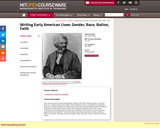
This Gallatin seminar links the #blacklivesmatter” movement to four broader phenomena: 1) the rise of the U.S. prison industrial complex and its relationship to the increasing militarization of inner city communities 2) the role of the media industry in influencing national conversations about race and racism and 3) the state of racial justice activism in the context of a neoliberal Obama Presidency and 4) the increasingly populist nature of decentralized protest movements in the contemporary United States. In this course we will be mindful of an important distinction between #blacklivesmatter (as an emergent movement that has come into existence within roughly the past three years) vs. a much older and broader U.S. movement for black lives that has been in existence for several centuries (which can be traced back to at least the first slave uprisings in the antebellum south). Part of our goal then, we be to think about how the former has been influenced by the latter and to what ends. Among the many topics of discussion that we will debate and engage this semester will include: the moral ethics of black rage and riotous forms of protest; violent vs. nonviolent civil disobedience; the hyberbolic media myth of “black on black” crime; coalitional politics and the black feminist and LGBTQ underpinnings of the #blacklivesmatter movement; the similarities and differences between the blacklivesmatter movement and the U.S. civil rights movement; and the dynamics of political protest among the millennial and post-millennial generations.
Our reading material will often be supplemented with live, in-person dialogues with contemporary grassroots activists who are currently involved in the movement. Through our readings and direct engagements with activists on the frontlines, we will ask: How, when, and in what ways is it possible for us to stand in formation against the treacherous legacies of capitalist patriarchal white supremacy?
- Subject:
- Arts and Humanities
- Cultural & Ethnic Studies
- Cultural Studies
- History
- Social Science
- U.S. History
- Material Type:
- Full Course
- Homework/Assignment
- Reading
- Syllabus
- Author:
- Frank Leon Roberts
- Date Added:
- 04/04/2021

